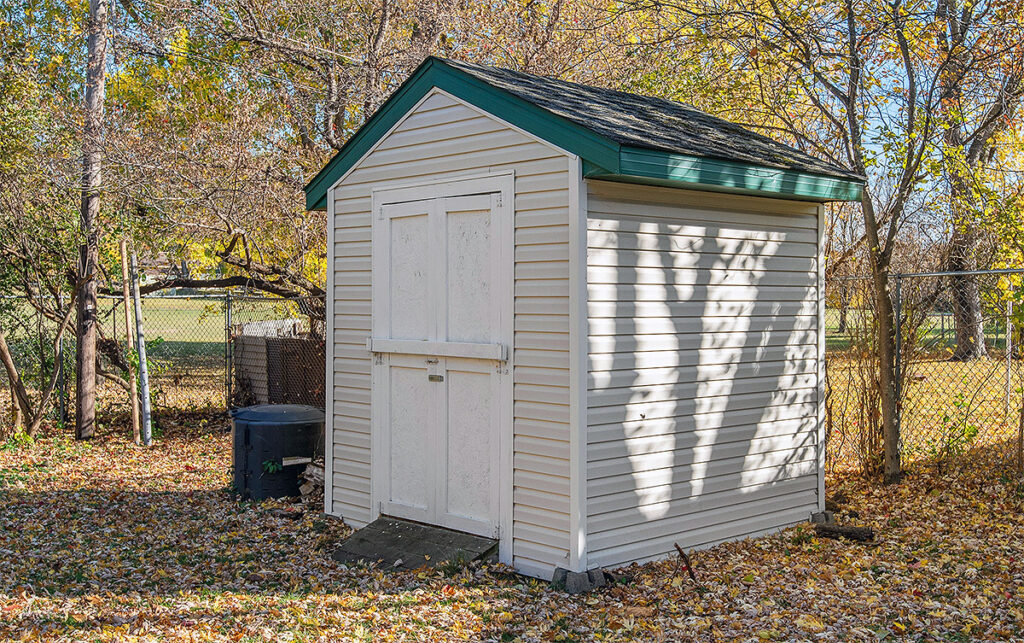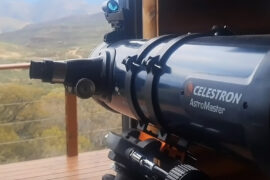One of the things no one tells you about a telescope is that the 10 minutes prior to using it and the 10 minutes when you have to pick up all your toys can be a pain in the you-know-what.
Some people go for the laziest solution and simply leave their telescopes outside, but I don’t recommend that, even when using a cover.
There are many places around the house where you can keep your telescope but in order to save time and effort carrying it all the way from the attic or the garage, some people consider installing a garden shed to store it.
But to make sure your precious device is safe, there are some things you must consider first.
Can you store a telescope in a shed?

Yes, a garden shed is a good place to store a telescope if you have the space for it. You will need to take some additional precautions like humidity, temperature, and dust, but if you take care of those it’s ok to store it there.
However, the shed will not be enough to cover all your bases and protect your expensive scope. While a shed will offer protection against direct sunlight, rain, and extreme cold, it can also offer disadvantages over the long term, like moisture accumulation, heat buildup, dust, and bugs looking for a nest.
A good cover is a must even when keeping the telescope inside, but in order to solve all those possible issues, you might want to take some additional steps.
How to store a telescope in a shed
The considerations you need to have when storing your device in a shed are the following:
Dust
Keeping the telescope in the shed doesn’t fully protect it from small particles of dust that accumulate inside.
Dust is one of the worst enemies for telescope mirrors because it increases the risk of scratches since you will have to clean them more often.
A telescope cover will be a necessity if you leave a telescope in a shed. Some people use simple plastic covers because it is cheaper, but they are not a perfect solution. Instead, if you are looking to save, try making your own cover. It’s not too hard.
Humidity/moisture
Even if the garden shed and the cover protect the telescope from direct drops of water, humidity can still sneak in and create condensation in the mirrors.
This condensation can leave spots in the mirrors if not dried properly, it can cause oxidation and rust in the metallic parts, and weaken the mirror’s glue.
This is also why it’s always recommended to let your telescope dry after using it in cold weather.
How much you need to worry about humidity and moisture is going to depend entirely on your specific situation and the weather of your location, but some ideas to solve it include:
- Good ventilation
- Reinforcing the floor of the shed with plywood
- Insulating the shed by adding a layer of plastic sheeting on the inside
- Putting some large salt rocks or moisture absorber packs in the corners.
Heat
High temperatures can be a problem for a telescope.
Heat can cause the mirror to loosen by weakening the optics glue. This can mess up the mirror’s alignment.
This is less of a problem with larger sheds that have windows or some other form of ventilation, but smaller, closed sheds made of metal or certain materials build up too much heat on the inside.
There are a few ways to fix this. The easiest is to position your shed in an area with shade so it doesn’t take all the sunlight directly. Some shed designs are already made for this and include cross-ventilation or roof vents. In more extreme cases, some people install a ceiling fan or even an AC unit, but that’s a bit of overkill unless there’s something else stored in the shed that requires a specific temperature.
Bugs
The most overlooked issue when storing telescopes for a long time are bugs.
It turns out telescopes make great homes for spiders and other insects. You really don’t want to bring out your telescope after the rainy season only to find it is now a nest.
Preventing this one is quite simple. Just make sure to close the cover at the bottom with an elastic strap or a cord so it is sealed, and even if you don’t plan on using it, uncover it to make sure everything is alright every once in a while.
Lock it up
Finally, don’t forget to lock your shed. Even if it’s a large telescope that is hard to move around, you don’t want to test your luck and have it stolen.
Summary
- It’s ok to store a telescope in a garden shed
- Make sure to use a cover
- Consider some possible issues like heat, moisture, damp, and dust.







